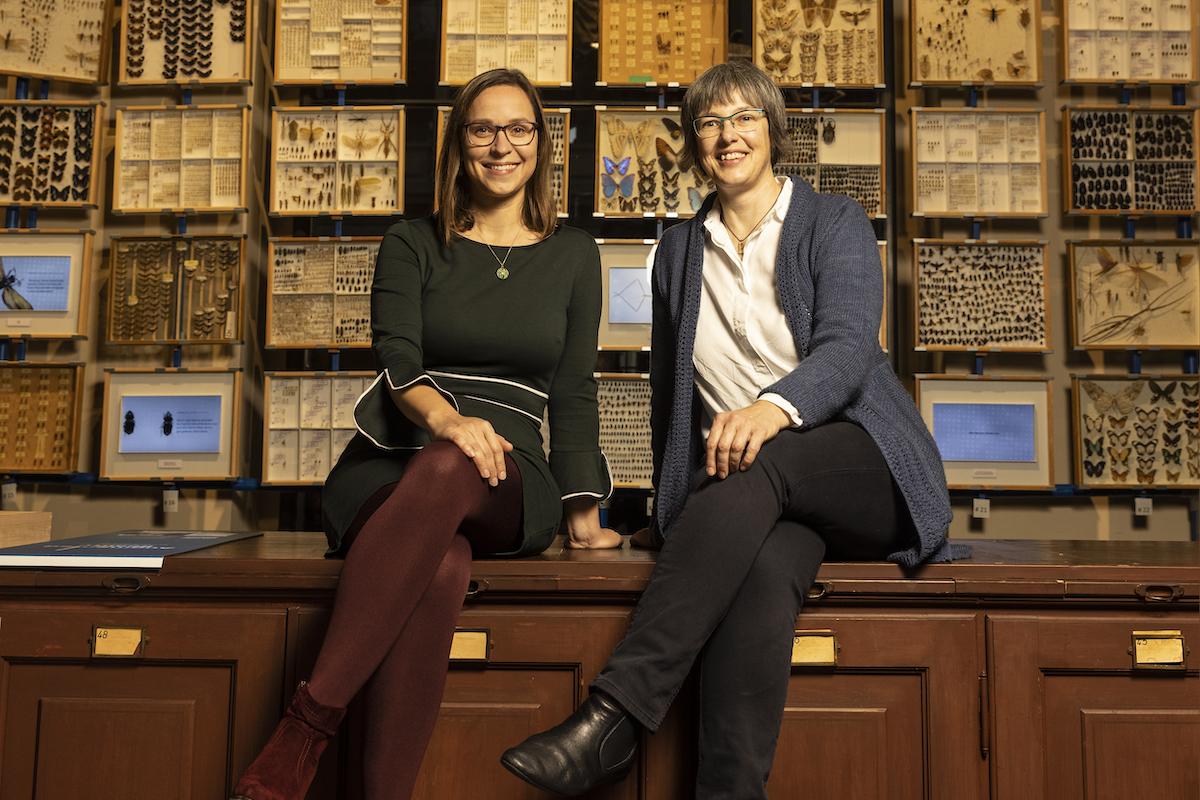Please introduce yourself including your position at MfN.
CQ: My name is Christiane Quaisser. I have a doctoral degree in biology and am a passionate ornithologist. My professional path led me from field ecology to scientific collection and then, from scientific use to strategic development. The questions of a sustainable, responsible and future-oriented development of the collection by and with a professional and motivated team have been my central driver and common thread since I started in collection management in 2007. At the Museum für Naturkunde Berlin, I took over the collection management in 2013, built up and led the Science Program Collection Development and Biodiversity Discovery, and am now very excited to develop the new Collection Future science programme together with Dr. Jana Hoffmann.
JH: My name is Jana Hoffmann. I am particularly interested in how we can design innovative forms of access and use of collections at GLAM institutions (galleries, library, archives and museums) that simultaneously enable active participation from society, business, and politics, and foster innovation. In recent years, I have successfully established and led the Science Program Digital World and Information Science. With my doctoral degree in Zoology, I have a strong connection to the basic research of the museum.
What is your role in shaping the Future Plan?
JH: Together with my colleague Dr. Christiane Quaisser, I am actively shaping the Zukunftsplan of the museum in the role of leading one of the main projects: Collection Discovery and Development. In our dual role as project and science program leaders, we establish a close link between the activities of our project in the Zukunftsplan and Science Program Collection Future. The project Collection Disclosure and Development is divided into four sub-projects:
CQ: In addition to being responsible for the project Collection Disclosure and Development, as Head of Collection, I am responsible for planning the new physical collection infrastructures (spaces, requirements, and standards) and how to get there (relocations, interim solutions). As a researcher, I am actively involved in the design and development of the research cluster Open Heritage. Exploring Collections, Creating Futures.
What opportunities do you see in the implementation of the Future Plan for the museum and for the society?
JH: With the implementation of the Zukunftsplan, we have the unique opportunity to fully open up the collection, i.e., to conserve it, digitally record it, and make it accessible for innovative uses. Our goal is to develop the collection into an open, digital-analog knowledge infrastructure with professional knowledge management for objects, knowledge and data that can meet future scientific, societal and technological requirements.
CQ: The Future Plan enables us to make the long-awaited quantum leap for our collection in every respect: structurally and preservation-wise, digitally-technologically as well as conceptually. The transformation of the collection over the next few years will give it a new presence, open up new possibilities, in the context of the museum, the campus with the Humboldt University as well as society. We are developing a collection for the future.
How do you imagine the museum in 2030?
CQ: First, of course, by the structural changes (Wow!) and the open, welcoming atmosphere. After entering, by the new spirit (and smell), which is aware of its roots but cleared of the dust both physically and mentally. Our collection has radiance as a model for its physical housing such as digital-analog accessibility and information networking, radiance as a necessary foundation for research and transfer, and our shared global heritage.
JH: My vision for collection development: In 2030, the Museum für Naturkunde Berlin has one of the most modern national collection infrastructures. This research infrastructure is fully integrated into the European landscape. We enable knowledge transfer via a globally networked Collection Future Center, a competence center for innovative collection management, interdisciplinary collection-based cutting-edge research, and application development with appropriate formats for knowledge transfer and a great variety of services. Holistic access to objects, digitized material, and associated knowledge are inspiration and source material for co-production and open innovation. The collection has become an "enabler" for research, business and innovation.
The interview was conducted by Dr. Gesine Steiner, Press Officer.
Status: 1 March 2021
Here you can find further interviews that were conducted as part of the Future Plan.
